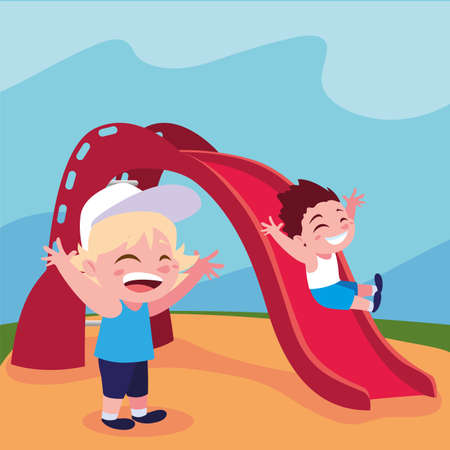Introduction to Outdoor Sensory Play
Stepping outside with your child opens up a world of sensory experiences that go far beyond what’s possible indoors. Outdoor sensory play is all about engaging your child’s senses—sight, sound, touch, smell, and even taste—through hands-on exploration in nature. Whether you’re crunching leaves underfoot on a fall day or feeling the cool splash of water at a local creek, these moments are more than just fun. They help support your child’s cognitive, physical, and emotional development in meaningful ways. Not only does outdoor sensory play encourage curiosity and creativity, but it also fosters stronger family bonds as you explore, learn, and laugh together. By embracing the natural world around you, you create opportunities for connection, growth, and unforgettable memories for both you and your child.
2. Nature Scavenger Hunts
There’s something magical about sending your child on a backyard or park scavenger hunt—a playful adventure that gently sparks all five senses. In the fresh air, with sunlight filtering through trees and birds singing nearby, scavenger hunts become an exciting way to explore the wonders of nature while building curiosity and confidence.
Why Scavenger Hunts Are Great for Sensory Play
Scavenger hunts encourage kids to notice the world around them in a whole new way. Touching rough bark, spotting bright wildflowers, listening for rustling leaves, or smelling sweet grass—each task invites your child to tune into their senses, moving their bodies and opening their minds to discovery. Plus, these activities are easy to tailor for any age, from preschoolers to older children.
How to Set Up a Simple Nature Scavenger Hunt
Start by making a list together of things you might find outside. Let your child add their own ideas! Here’s an example list you can print or write down:
| See | Touch | Hear | Smell |
|---|---|---|---|
| A red flower | Smooth stone | Bird chirping | Pine needles |
| A butterfly | Rough tree bark | Wind blowing | Fresh-cut grass |
| A squirrel or bunny | Soft leaf | Distant dog barking | Blooming flowers |
TIPS FOR A FUN AND SAFE HUNT:
- Keep it local: Use your backyard, neighborhood park, or a safe trail—no need to travel far.
- Let curiosity lead: If your child wants to spend extra time examining a bug or touching moss, let them linger and soak up the moment.
- Bring along tools: Consider a magnifying glass, nature journal, or even a smartphone for snapping photos (but always keep screen time balanced).
- Celebrate small wins: Cheer each discovery with high-fives or a special snack break under a shady tree.
The best part? You’re not just finding objects—you’re creating memories and nurturing your child’s sense of wonder for the natural world. With each scavenger hunt, you’ll both see your familiar surroundings in a brand new light.

3. Muddy Hands and Bare Feet: Messy Outdoor Play
There’s something magical about letting your child get delightfully messy outdoors. When little hands dig into cool, damp soil or toes wiggle in the grass, children are not just playing—they’re discovering the world with all their senses. Muddy hands and bare feet encourage a kind of learning that goes beyond books and screens.
Digging in the dirt, splashing in puddles after a rainstorm, and running barefoot over soft grass offer chances for children to build resilience, confidence, and wonder. These unstructured activities help kids learn how to take small risks safely, use their imagination, and develop problem-solving skills. Plus, it’s simply joyful to watch their faces light up when they make a mud pie or feel the tickle of clover under their feet.
As parents, it can be tempting to keep our little ones spotless and tidy. But embracing a bit of mess outdoors is a gift—one that fosters creativity, independence, and a deep connection to nature. Have a towel or hose ready for clean-up, relax your rules for outside play clothes, and let your child experience the pure happiness of getting messy. The memories you create together during these carefree moments will last long after the mud has washed away.
4. Listening Walks: Tuning Into Nature’s Sounds
Imagine transforming a simple stroll through your neighborhood or local park into an enchanting sensory adventure for you and your child. Listening walks are all about slowing down and truly hearing the world around you. As you walk together, encourage your child to pause every so often, close their eyes, and tune in to the sounds of nature—bird songs, the gentle rustle of leaves in the breeze, dogs barking, or even the distant laughter of other children at play. This mindful activity not only sharpens observation skills but also encourages a sense of presence and wonder in everyday moments.
How to Start a Listening Walk
Begin by letting your child know that today’s walk is special—you’ll be listening detectives! Invite them to use their “super ears” to notice sounds they may have never paid attention to before. Stop at various points along your route and ask open-ended questions like, “What do you hear right now?” or “Can you find a sound that’s far away?” This encourages thoughtful listening and sparks curiosity about their environment.
Common Sounds You Might Discover
| Nature Sound | Description | Where You Might Hear It |
|---|---|---|
| Bird Songs | Melodic chirping or singing from treetops | Parks, gardens, neighborhood trees |
| Rustling Leaves | The soft swishing as wind moves through branches | Wooded paths, under large trees |
| Laughter & Voices | Distant giggles and conversations from other families | Playgrounds, picnic areas, open fields |
| Barking Dogs | Lively barks and playful yips from pets nearby | Residential streets, parks with dog areas |
| Insect Buzzing | The hum of bees or crickets hidden in grass or flowers | Meadows, flowerbeds, grassy lawns |
Encouraging Mindfulness and Connection
Listening walks help your child develop mindfulness—a skill that supports emotional regulation and focus. By taking time to notice even the quietest sounds, children learn patience and become more attuned to their surroundings. Plus, sharing these small discoveries together builds cherished memories and deepens your bond. So next time you step outside, invite your child to join you on a listening walk and see how magical the world can sound when you truly listen.
5. Nature Art Creations
One of the most magical ways to connect with your child outdoors is by transforming nature’s treasures into beautiful works of art. Gather fallen leaves, smooth rocks, vibrant flowers, twigs, and even pinecones during your walk or backyard adventure. Let your child’s imagination guide you as you arrange these natural finds into creative patterns, mandalas, or whimsical creatures right on the grass or a picnic table.
This hands-on activity isn’t just about making something pretty—it’s a full sensory experience. Little hands get to feel the textures of rough bark, velvety petals, and cool stones, sparking curiosity and encouraging tactile learning. As you work together to decide which colors and shapes fit best, you’re also nurturing your child’s sense of design and problem-solving skills.
Nature art creations are a perfect way for families to slow down and truly notice the beauty in everyday surroundings. There’s no pressure for perfection—just laughter, conversation, and treasured bonding moments as you create something uniquely yours. When you’re done, snap a photo to remember your masterpiece before letting nature reclaim its materials, showing your child the gentle cycle of creativity and respect for the environment.
6. Sensory Gardens and DIY Exploration Stations
Creating a sensory garden or hands-on exploration station is a magical way to bring outdoor sensory play right to your backyard or local park. You don’t need a lot of space or fancy equipment—just a little creativity and curiosity! Start by dedicating a small corner of your yard, balcony, or even a few pots on your porch to become your sensory haven. Plant herbs like mint, basil, or lavender for their lovely scents and soft leaves. Add flowers with different textures and colors, or scatter some smooth stones and pinecones for little hands to discover.
If you’re heading to the park, pack baskets or bins filled with nature treasures: pinecones, pebbles, fragrant herbs, or a cup of water for splashy fun. Let your child dig in with their fingers, smell the plants, and listen to the rustle of leaves. These simple setups invite kids to touch, smell, see, and even hear the wonders of nature—boosting their sensory development while they play.
Sensory gardens are also wonderful places for calm moments together. Try closing your eyes with your child and noticing all the sounds around you, or gently brushing their hands over soft leaves and cool stones. These shared experiences nurture your bond while helping your child feel safe and curious outdoors. And remember—no two sensory gardens will ever be the same. Each season brings new sights and scents to explore, turning every visit into an adventure you’ll cherish together.
7. Tips for Safe and Enjoyable Outdoor Play
Spending time outdoors with your child is a wonderful way to nurture their senses and curiosity, but it’s important to make safety a top priority so every adventure stays happy and worry-free. Here are some practical tips to keep outdoor sensory play safe, inclusive, and full of joy:
Dress for the Weather
Before heading outside, check the weather forecast and dress your child in layers that are easy to add or remove. Sun hats, light long sleeves, or rain boots can make all the difference in keeping little ones comfortable and ready for any kind of exploration.
Sun Protection Matters
Apply a broad-spectrum sunscreen to your child’s exposed skin at least 15 minutes before you go out, even on cloudy days. Don’t forget the tops of ears and the back of the neck! Sunglasses and brimmed hats offer extra protection during sunny adventures.
Bug Safety Basics
Nature is full of friendly critters, but some—like mosquitoes and ticks—require a little caution. Use child-safe insect repellent when necessary, especially in wooded or grassy areas. After playtime, do a quick check for ticks and other insects.
Stay Hydrated
Bring along water bottles and take regular breaks to sip water together. Outdoor play can be thirsty work, especially on warm days!
Choose Inclusive Activities
Make sure your outdoor activities welcome every child’s abilities and comfort levels. Sensory play should be accessible to all; consider mobility needs, possible allergies, and offer options so everyone feels included.
Supervise with Care
Keep a watchful eye as your child explores new textures, smells, and sounds. Encourage curiosity while setting gentle boundaries—remind them which plants or insects should only be looked at, not touched.
Create a Joyful Atmosphere
The most important ingredient in safe sensory play is a joyful spirit. Celebrate discoveries together with laughter and encouragement, turning every outing into a special memory filled with love and wonder.


